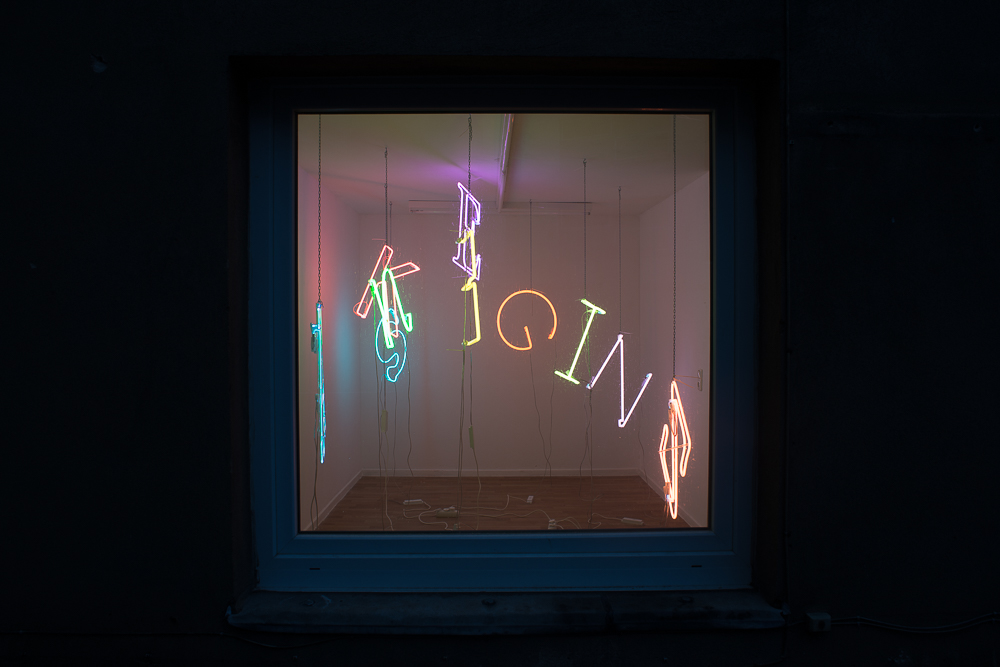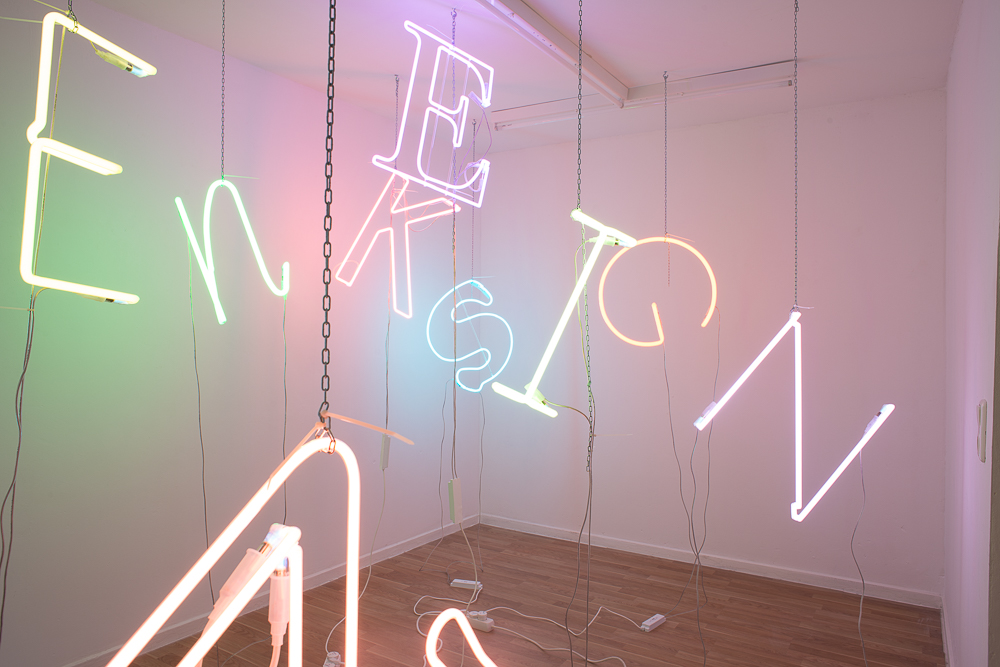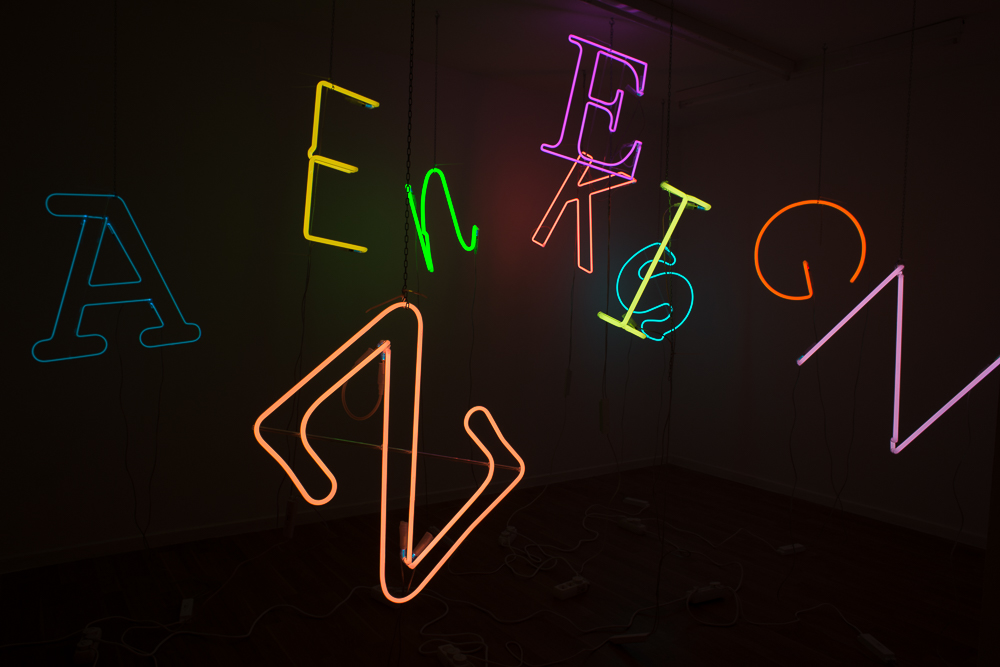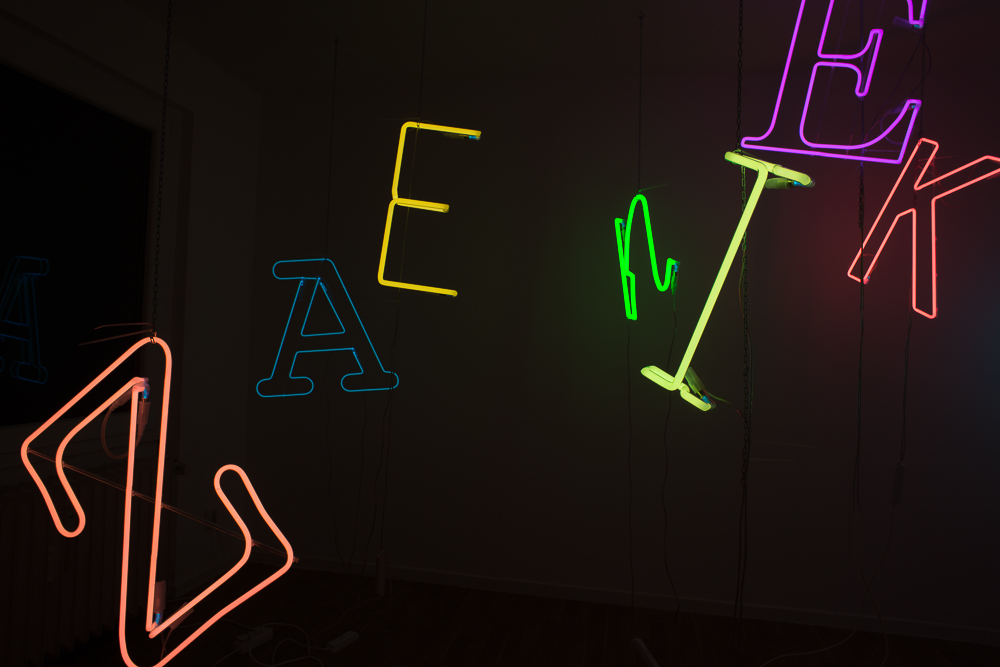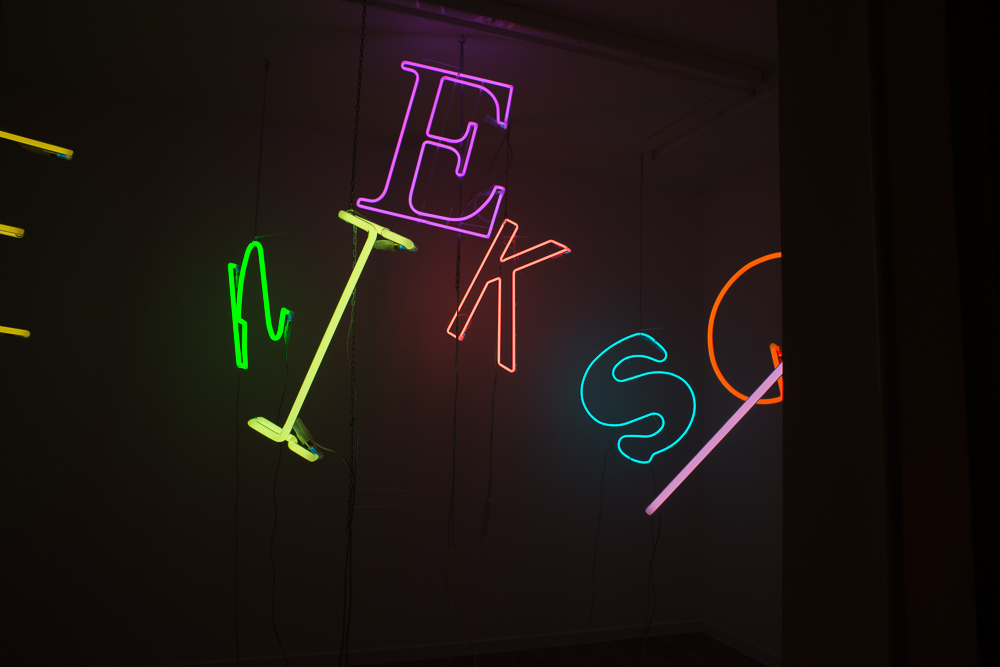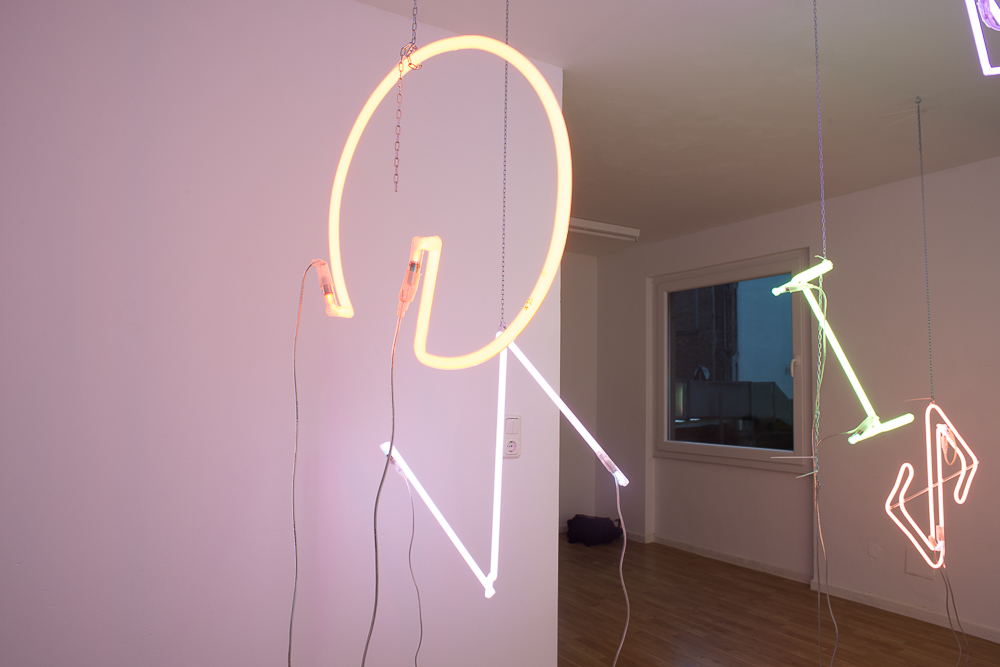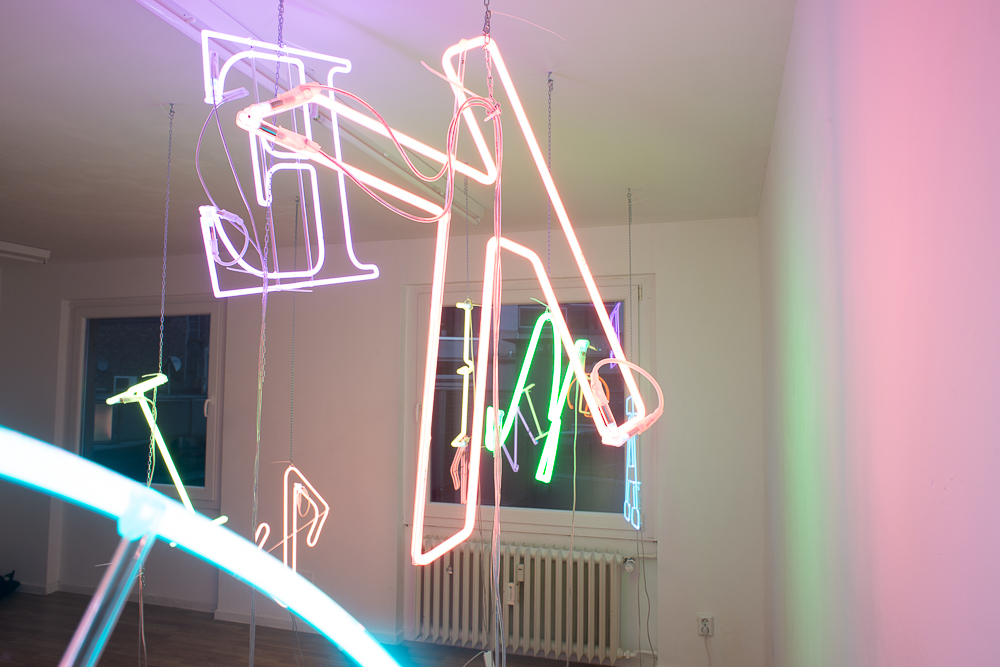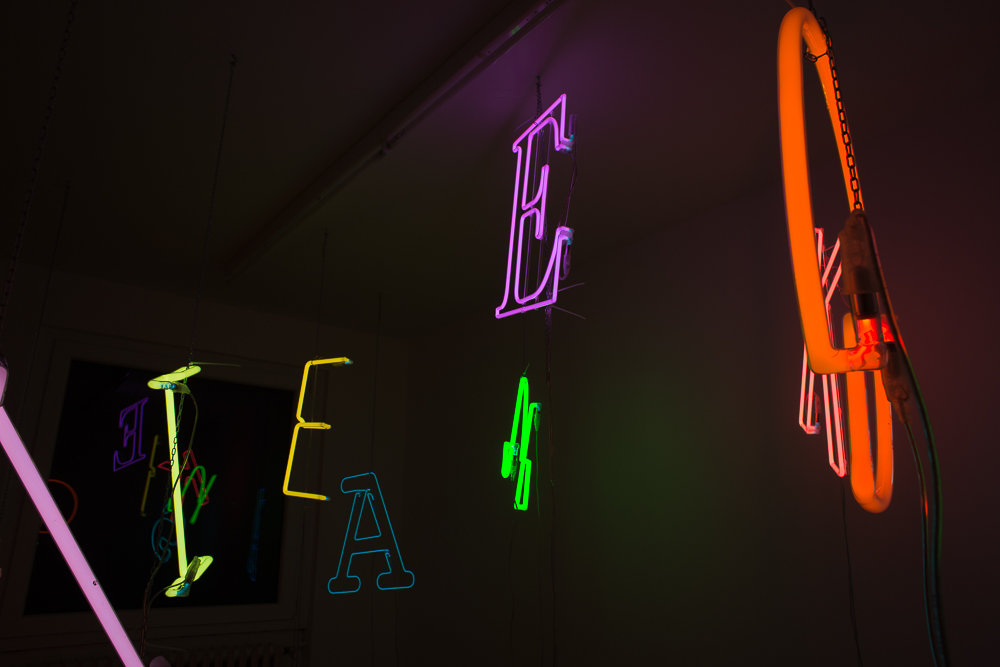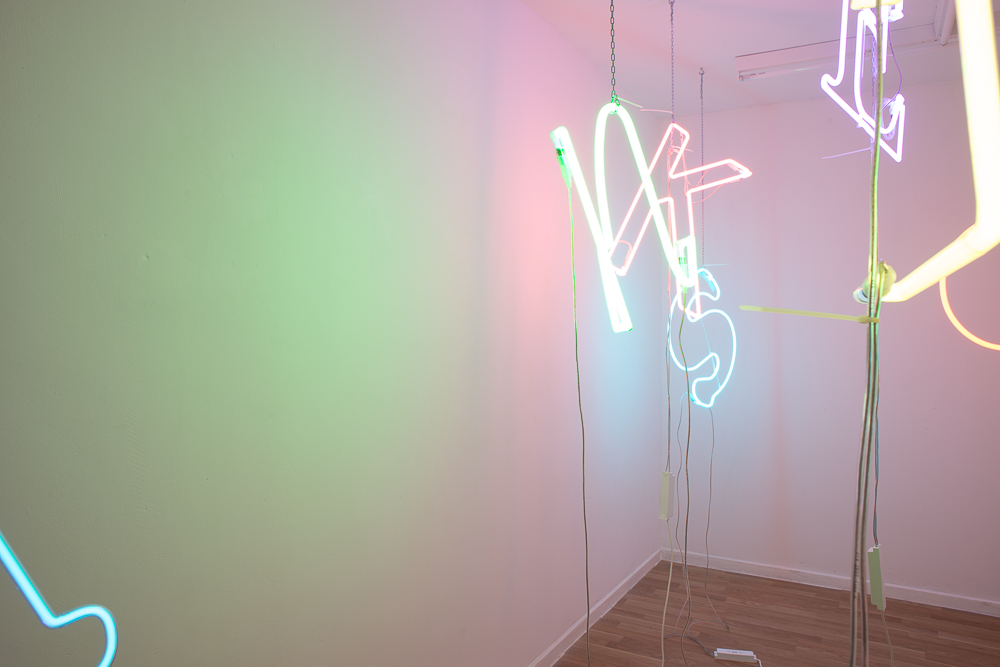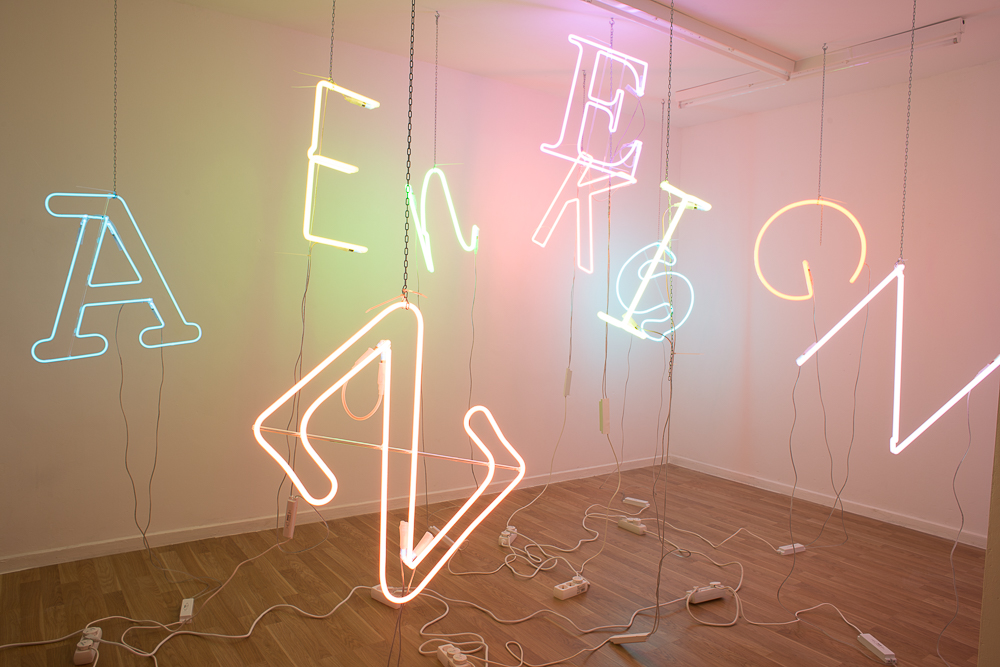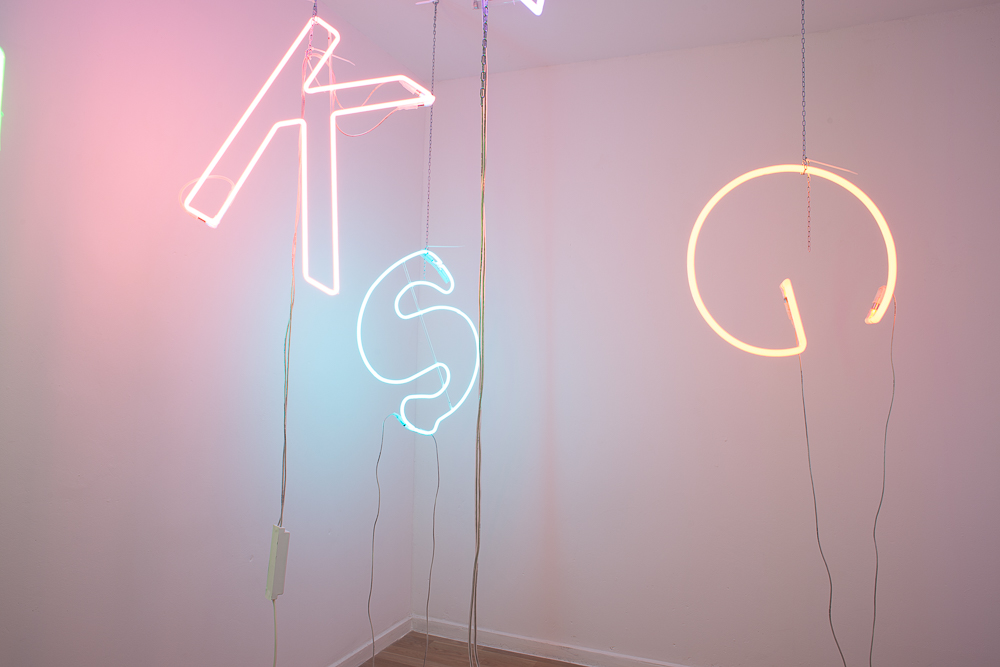The name used to fill the space of MÉLANGE is not only a title but also a quite literate expression in case of Jonathan Monks solo show. Monk, who is known for his constant spin-off of contemporary art works and already “historic” pieces of conceptual art, loves to play with the pre-sets introduced by other artists. The art of appropriation is definitely linked to his ouvre he constantly pushes the boundaries set by our idea of what has been appropriated and why. While he never uses a simple copy, his work shows the humours and maybe even silly side of a minimalistic, conceptual approach and reminds us to rethink and reinterpret those artists. This intensive play with a referencing system, something that is held dear by many contemporary productions, not only in art but currently very popular in TV-Series and Movies. The wittiness of the educated and synchronised being mirrored back to them, making them realise where they stand in society or within their own peers. This notion, while not necessarily political, constantly challenges ones perception and point of view in a very privileged society and asks for a projection of what could happen next. His quotes are takes on our consumerism reflected in art and daily life.
The neon piece presented at MÉLANGE works in a very similar way. When the space is filled with the light it emits, the next step is to fill the head of the people with ideas on what this name means to them. We are left with the realisation that we are incapable of knowing it all. We know the person, we know snippets of gossip but we are left puzzled of what the connection might be. There is no adequate way of understanding the work per se. We can approach Monk’s piece from a very academic point of view, based on the introduction of the neon as part of conceptual art in the 1960s, but what interesting take does that give us that we might not already know. Would it add something valid? And where would be the fun in that? On the other hand we have the speculative information that comes along with the name used to fill the space. Why has it been chosen? Which connection might be foregrounded? Is there any?
We leave those speculations to you and give you some more information on the artist life to help you speculate even more of what might be important, and what not:
Jonathan Monk was born on a Sunday in the Month of February 1969 in Leicester. The royal weather institute called it a very cold month with heavy snowfall throughout all of Scotland, Midlands and England. Only three days after his birth, the small town of Kirkwall, witnessed the strongest winds ever recorded in the Scottish realm (138 mph), a sign of an unusual weather that tormented the northern half of the hemisphere throughout the winter. The health department declared that the water in the area of Leicester was bacteriologically satisfactory for drinking purposes. He was born the same day that Yasser Arafat in Cairo got appointed the chairman of the Palestine Liberation Organization and just a few weeks before the Church of Scotland ordinated its first female minister, 66 year old Catherine McConnachie. It was the year that the voting age in the United Kingdom was lowered to 18 and the death penalty gets formerly abolished. Days later Jaguar released its infamous XJ6 convertible, which would move on to win the Car of the year award. Around the same time as his birth a meteorite headed towards earth, the so-called Allende meteorite reaches earths atmosphere on Saturday, shattering into pieces and scattering across the Mexican state of Chihuanua. Boeing launched its maiden voyage of the 747 just one day after, followed by the first test flights of the super sonic passenger plain Concorde. He was born in the year that humanity reached for the stars, and after Yoko Ono and John Lennon finally married, Apollo 11 was able to land on the moon. The US government realized the impossibilities it was facing in Vietnam and started to withdraw troops and enter secret peace negotiations. At the same time Scooby Do, as well as Monty Phyton’s flying circus had there first appearance on public television, while Led Zepplin was “Dazed and Confused” when they were covering Jake Holmes at the De Montfort Hall in Leicester in the month of March.
In a different part on the planet Sülyeman Demirel becomes the Prime minister of Turkey, a position he would hold for six legislation periods and his reign would continue until the military coup in 1980. The “International Labour Organisation” receives the Nobel Peace Prize and in Cologne Wolf Vostel casts his Opel Kapitän into concrete and left the chunk of stone sit in the parking lot in front of his gallery, occupying a slot over the next years. It is the last year of the “Kunstmarkt Köln”, the world first Art Fair, the gamete of the current art world-art fair craze, with pieces that would range between 20,00-60.000,00 DM and before it would change its name for the first time. Art for everyone was maybe still available and a valid idea. And finally, it was the moment when conceptual art entered the system on a full scope, introducing a new generation of artist, mainly male, to a wider public.
His Chinese zodiac is the Earth Monkey, same as people born in 1908, which are known for building great fortune out of nothing and is playful, while hiding his opinion beneath apparent friendliness. This adaptable and versatile zodiac sign is considered to be extremely intelligent and ability to pull the wool over people’s exes.
The City of Leicester Polytechnic, where Monk would go to study, was the result of the Colleges of Art and Technology to merging and looking back at nearly 100 years of existing. It would merge again, and change its name, ones Monk would be done with his studies there, but this is a different story to tell.
So what can we make of all of this information that has been put forward for this show? All details are historical facts, hovering around the date of birth of the artist. Our names, our standing within our own time, are always connected to nature and issues larger then life. The person becomes a historical signifier, by which it is interwoven with history, no matter if she/he was “a relevant figure in her/his on field” or just an ordinary person, by simply having a name and existence. This leaves us with the question, each of us has to answer for ourselves: What are we looking at? A Name? A Story? An Idea? A Space? Or just a way of filling the space with expectations?
Cheers to that!
The invitation of Jonathan Monk was inspired by conversations with Ibrahim Öztas.
